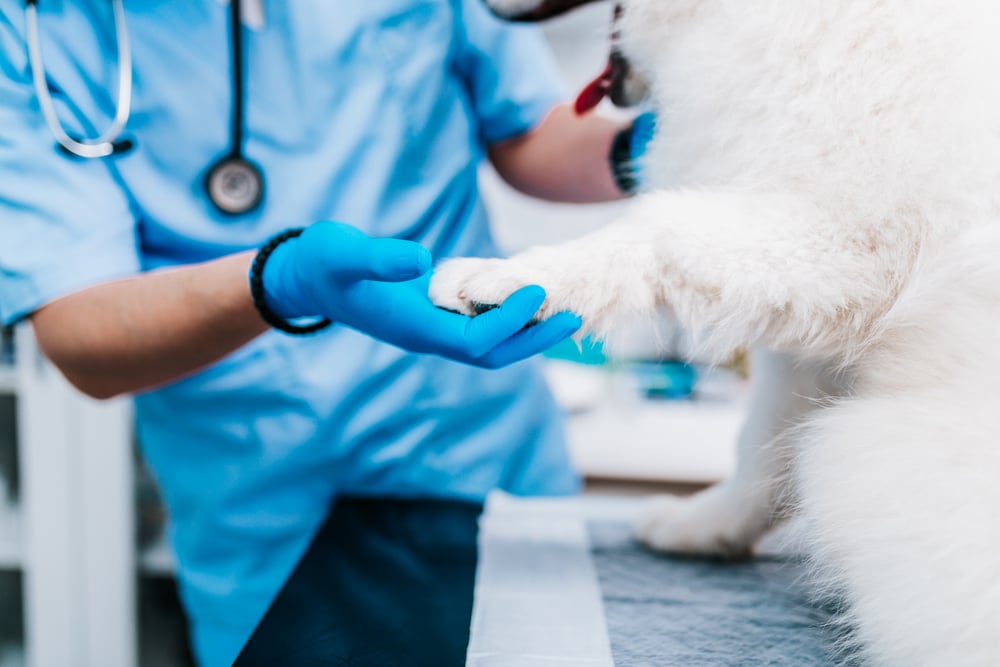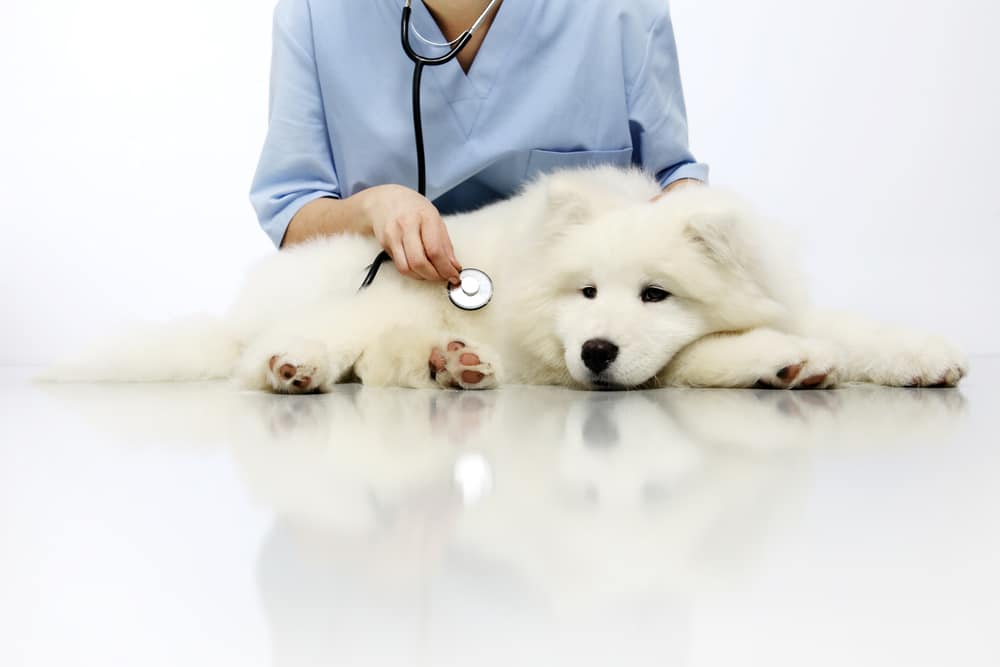Have you noticed your Samoyed not being as happy as it used to be when you are preparing to go for a walk? Do you see it stay back when its other dog friends run around in the park? Or has it whined when you pet it at the back near its hips? All of these signs are red flags, and they could mean it is time to visit your veterinarian. That’s because your dog may have hip dysplasia, but does it affect Samoyeds too?
Hip dysplasia is a disease that affects medium and large dog breeds, and among those are the Samoyeds too. More specifically, it affects dogs’ hip joints, causing them a significant amount of pain. Consult with your vet about treatment options for this issue.
Table of Contents
What Is Hip Dysplasia?
Hip dysplasia is a condition affecting dogs’ hip joints and can cause a lot of pain for your furry friend. Basically, what happens is that the thigh bone does not form properly, so it doesn’t sit in its proper place. This could cause the joint to get loose and even fall out.
In other cases, whenever the dog moves, there is a lot of grinding because there is no proper lubrication in the joint, so we end up with bone grinding on bone. This hurts the dog to the point it would not even be happy to go out for its regular walk.
Causes Of Hip Dysplasia
Here are the most common causes for the development of this condition in Samoyeds and other medium and large breeds of dogs.
Osteoarthritis
This is a progressive, degenerative disease that affects all of the joints, causing a lot of pain for the dog. Unfortunately, it can’t be treated, but it can be managed so that the dog will have a normal happy life
Environmental Factors
Hip dysplasia is usually a genetic disease, meaning that if mum and dad had bad hips, there is a good chance the puppy will have it too. Every puppy is born with a certain chance of developing dysplasia, and environmental factors such as the type of exercise, the flooring where the puppy plays and moves and how much the puppy is fed, could speed up the expression of those genes.
In other words, even if you have a puppy that has come from parents who are not known to have dysplasia, if you do not take care of it properly, it could end up developing the disease anyway. Healthy mum and dad is not a 100% guarantee that your puppy is safe and sound. As owners, you need to make sure the puppy lives up to that potential.
What Are The Signs Of Hip Dysplasia In Samoyeds?
Samoyeds suffering from hip dysplasia show certain signs. Here are the most common ones.
Stiffness In The Hind Legs
Owners may notice their dog has a hard time getting up, especially in the morning. It may seem to the owner like the dog is making a lot of effort to pull up its hind legs, and in doing so, it causes it pain.
Reluctance To Run
Dogs suffering from hip dysplasia will not be fond of running in the park as they used to be. This is because every movement in the hip joint causes a bone to rub over a bone, which is extremely painful. That is why many times, dogs choose to sit rather than be active, which the owners may find surprising and concerning. Up to now, as a vet, I have never seen a patient with dysplasia that is not willing to move, even if that is sometimes very painful for them. They may walk but certainly would not choose to run.
What To Do If You Suspect Your Samoyed Or Other Dog Has Hip Dysplasia
If by chance you have recognized some of the signs mentioned above, then it is our advice to call your vet and schedule a check-up. Many times the local vet may suggest a referral consultation with an orthopedic surgeon, which is an even better idea. After the initial exam, the surgeon may recommend your Samoyed be sedated because then they can do x-rays and, in some cases, even do a computerized tomography (CT) scan.
Treatment Options For Hip Dysplasia In Samoyeds And Other Dogs

Depending on how severe the case is, your orthopedic surgeon will recommend a certain course of treatment. Unfortunately, dysplasia can’t be treated with medication. You can only try and manage the pain, which will work until a certain point in time, but surgery is usually the best course of action for the dog, especially if it is experiencing a lot of pain.
Surgical Approach
There are two main surgeries that are usually performed for hip dysplasia treatment.
Total Hip Replacement
The name says it all. Here the surgeon cuts the femoral head and replaces it with an artificial hip. It is pretty much the same as in humans.
Femoral Head Osteotomy
Here the femoral head is removed to alleviate the pain that is caused from rubbing bone on bone. Usually, the dog requires good postoperative recovery exercise in order to build up muscle mass that will hold the leg in place.
This is why swimming is the best option for dogs with this condition. However, keep in mind that with Samoyeds, you will need to help dry them after they take a dip in the water.
Weight Management
Dogs that have a mild form of hip dysplasia may not need any surgery. The vet will recommend regular checkups and weight management because any extra weight will put pressure on the joints that are already damaged, causing even more pain.
Is There Any Way To Prevent Hip Dysplasia?
The best way to prevent hip dysplasia in Samoyeds or other dog breeds is by choosing reputable breeders who do screening of their dogs before they have puppies. This way, you eliminate the genetic part. The other way is to listen to advice from your vets and breeders once you get your puppy. Although hip dysplasia can’t be prevented in dogs that genetically inherit it, there are ways to lessen its effects, such as the aforementioned weight management option.
To Conclude: Does Hip Dysplasia Affect Samoyeds?
Hip dysplasia does not spare the Sammies. It is a painful condition that limits your dog in the long run. It also could drain both your dog and your wallet. That is why we strongly recommend you do your research when choosing a breeder for your new Samoyed puppy. But if you get a Samoyed with hip dysplasia, just know there are ways to help them through it.
So, are you worried your Samoyed has hip dysplasia? Have you ever had a dog with hip dysplasia before? Let us know in the comments below!
